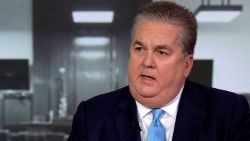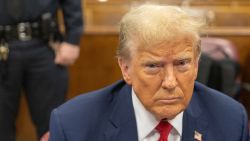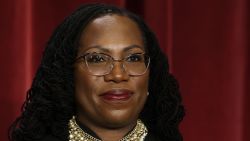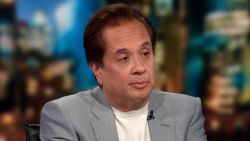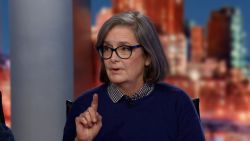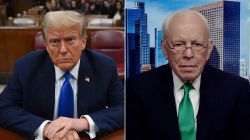From his open defiance of public health officials when holding rallies to his increasingly explicit embrace of White racial backlash, President Donald Trump has set a course for his reelection campaign that could produce the GOP’s largest deficit in the history of modern polling among well-educated White voters.
Relative to other Republicans, Trump has underperformed with those voters since he began his first presidential campaign in 2015. And by flouting science and openly inflaming racial tensions, he is now directly centering the campaign debate on two of the principal dynamics that have alienated those voters from him. That shows signs of accelerating the shift of these voters – who had never backed a Democratic presidential nominee in polling before 2016 – away from the GOP to an unprecedented new level.
“I don’t know who he is talking to,” said Steve Schale, a veteran Florida-based Democratic consultant who now runs Unite the Country, a super PAC supporting presumptive Democratic nominee Joe Biden. “I guess at this point their theory of the case is this whole thing becomes a complete race to the bottom, and it becomes a low turnout [election] all about their base. If you look at suburban women, for example … is he talking to them?”
Build your own road to 270 electoral votes with CNN’s interactive map
By contrast, although the widespread concern in Black and Hispanic communities both about George Floyd’s death and the disproportionate burden they have faced from the coronavirus outbreak could increase their turnout from 2016’s tepid level, so far most 2020 polls have not shown Biden improving on Hillary Clinton’s margin among them. Trump, meanwhile, maintains a consistent lead among White voters without college degrees, though almost all surveys show his margins with the women in that group narrowing substantially since 2016.
Polls now show not only a decisive consensus among Whites with at least a four-year college education that Trump has mishandled the coronavirus outbreak and the protests that emerged after the death of Floyd, but also that many of those voters believe Trump is exacerbating those problems through his actions. Those include his determination to hold in-person rallies and to accept the GOP nomination before a traditional convention audience this summer and his retweeting on Sunday of one video in which one of his supporters chants “White power,” and another on Monday in which a White couple brandish guns at peaceful protesters.
These reactions could make the 2020 election the culmination of the long-term electoral realignment that I’ve called the “class inversion”: the movement of well-educated White voters toward the Democrats even as blue-collar Whites drift toward the GOP, a reversal of the pattern that defined American politics for the first decades after World War II.
Reverting to 2016 themes
Trump has always tried to convince his primarily non-college and non-urban White base that he “alone” can protect them from the twin forces he portrays as threatening their interests: contemptuous elites who allegedly disdain their values and dangerous minorities and immigrants who purportedly threaten their jobs and their physical safety.
Under the enormous pressure of the coronavirus outbreak and the massive nationwide protests over racial inequity, Trump has reverted to those core themes.
He has frequently disparaged the advice of medical experts, most pointedly by refusing to wear a mask and continuing to hold large in-person rallies over the objections of local officials in Tulsa, Oklahoma, and in Phoenix. And he has responded to the Floyd protests primarily with racially infused belligerence, such as his twin retweets of angry Whites over the weekend, his unwavering defense of Confederate monuments and his charge that aspects of the Black Lives Matter movement represent “Treason, Sedition, Insurrection!”
Observers in both parties believe Trump sees his defiance of local officials and medical experts on the rallies as a way to reinforce his identity as an outsider who will break the rules to defend his voters’ interests. But on both sides, many believe that approach carries enormous risk, particularly with older and college-educated voters, both of whom have displayed elevated levels of concern about the pandemic.
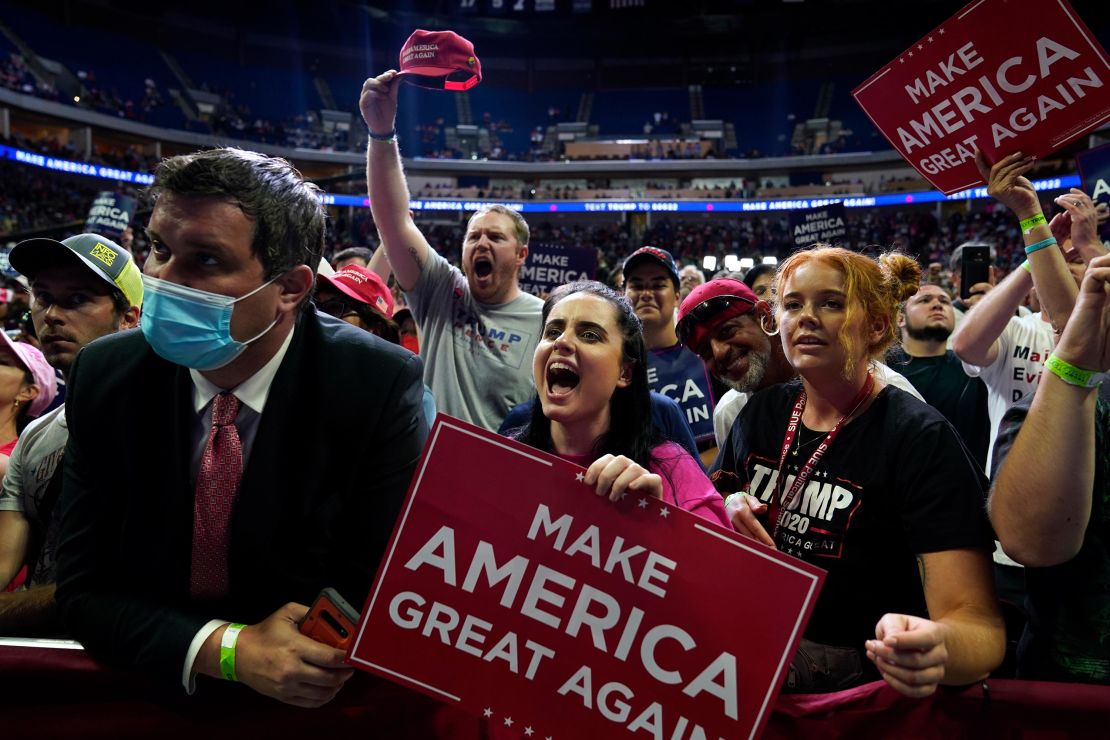
When Trump appeared last week in suburban Phoenix, which is suffering a fierce coronavirus surge that has pushed the total caseload as of Monday past 45,000 in Maricopa County, much of the coverage of his rally at a megachurch focused on his refusal to require masks or social distancing and the brief amount of time he devoted to the outbreak (10 minutes in a 90-minute address).
For Trump to hold an event that did not require masks “is a bit tone deaf in this part of the state,” Charles Coughlin, a veteran Phoenix-based Republican consultant, told me. “It’s part of [his] anti-establishment shtick, which seems to be wearing very thin in a crisis.”
Democratic pollster Nick Gourevitch, whose firm the Global Strategy Group helps to conduct the daily Navigator tracking poll measuring attitudes on the pandemic and race relations, offers a similar verdict. In Navigator polling last week, he said, a solid majority of Americans opposed Trump’s decision to restart his rallies, with opposition much greater among Whites with college degrees (about 3-in-5) than those without one (just under half).
In the Navigator surveys, about two-thirds of Whites with at least four-year degrees have consistently expressed concern that Trump ignores the opinions of experts, with more than half saying that pattern very seriously concerns them, he said.
Trump holding the rallies despite the advice of public health officials is “just continued fodder for ignoring expert advice, which has always been a deep concern that the voters have had,” Gourevitch said. “They also play into the self-absorption aspect that he needs these rallies for himself and his own reelection rather than the good of the people.”
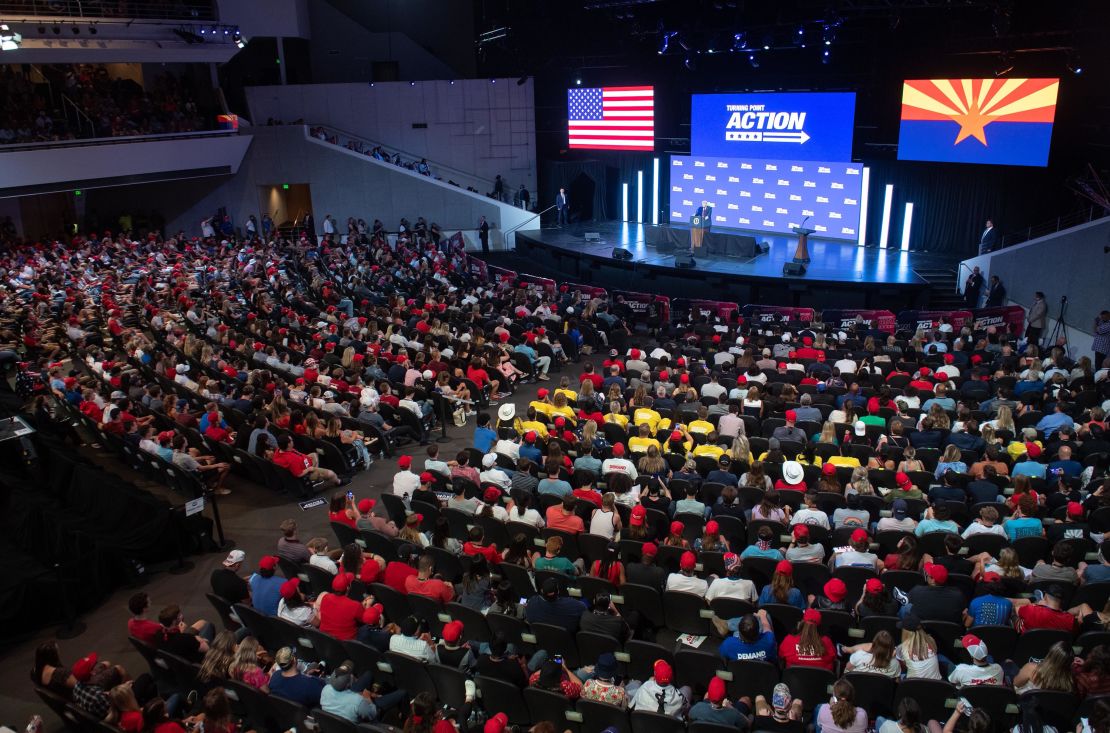
Those concerns are apparent in recent national and state polls, especially among the college-plus voters who often see their own success in life as based on the expertise they amassed through their education. In last week’s national New York Times/Siena College poll, about 90% of voters from all races with four-year college or graduate degrees said they trusted medical scientists to provide accurate information on the virus, while only 18% of the former and 12% of the latter said they trusted Trump.
In the same poll, two-thirds of those with four-year degrees and three-fourths of those with graduate degrees said they disapproved of Trump’s response to the outbreak. Likewise, in the latest national CNN poll conducted by SRSS, almost two-thirds of college-educated Whites disapproved of Trump’s response to the outbreak – while a narrow majority of Whites without degrees approved.
Republican consultant Alex Conant, the communications director for Sen. Marco Rubio’s 2016 presidential campaign, says such numbers among well-educated voters (as well as comparable weakness among seniors) show the price of Trump’s downplaying of the crisis and his open defiance of public health officials.
“I think it’s why he’s losing in all these swing states,” Conant said. “I think there is a slice of his base who loves it and is wildly supportive of him throwing caution to the wind and hitting the campaign trail. And that happens to be a part of his base that he is very in tune with. But then if you’re an independent voter or more traditional conservative … this is a constant reminder of all the things you don’t like about his presidency. We’re a long way from talking about taxes and judges.”
In a measure of Trump’s challenge, even Jacksonville, the planned site of his convention acceptance speech, on Monday announced that it would require residents to wear masks in public and in indoor settings.
Similar concerns on race relations
All indications signal that Trump’s response to Floyd’s death and the protests it sparked is dividing the electorate along the same lines. After initially indicating some concern about Floyd’s death, Trump has retreated to more familiar ground by urging greater force against violent protesters (and actually applying it before his walk to St. John’s church), highlighting those racially inflammatory videos and repeatedly denouncing the Black Lives Matter movement.
In all these gestures, Trump has distantly echoed the arguments of Richard Nixon, who won the presidency in 1968 in part by promising to restore “law and order.” But in the process, Trump may only demonstrate how much the country has changed since Nixon’s time. Critically, this spring’s polling consistently shows that Trump’s belligerent message on race is alienating not only the growing number of voters of color but also the same college-educated White voters already uneasy over his handling of the coronavirus.
In that most recent national CNN survey, fully 71% of Whites with at least four-year degrees said they disapproved of Trump’s handling of race relations. That was nearly as high as the percentage of non-Whites (75%) who disapproved.
See Trump and Biden in head-to-head polling
A national Quinnipiac University survey earlier this month found that two-thirds of college-educated Whites preferred Biden over Trump to handle race relations (while a majority of Whites without degrees favored Trump.) That was as big an advantage as Biden enjoyed on that question among Hispanics (although Black voters preferred him even more emphatically, by almost 10-to-1.)
As Matt McDermott, a Democratic pollster, has argued, those results underscore a critical shift from 1968: While most White suburbanites then believed Nixon could tamp down disorder, many of the equivalent voters today believe that Trump’s confrontational and divisive language on race increases the risk of violence in their communities.
In a striking finding, Quinnipiac this month found that college-educated Whites, by 2-to-1, said that having Trump as President made them feel less safe rather than more. By comparison, Whites without degrees, by a 20-point margin, said Trump made them feel more safe.
The Navigator polls likewise found that two-thirds of college Whites expressed concern that at moments of crisis Trump makes things worse “with … inflammatory words and actions.”
The cumulative effect of these attitudes could yield an unprecedented deficit for a Republican presidential nominee among well-educated Whites. Until 2016, neither of the two longest-running data sources on voter choices had ever shown Democrats winning White voters with college degrees. That was true for the exit polls conducted for a consortium of media organizations since the 1970s, and the University of Michigan’s American National Election Studies, which traces back to 1952.
In 2016, the Edison Research exit polls conducted for media organizations that included CNN showed Trump squeezing out a narrow 3-point win among college-educated Whites, while the American National Election Studies poll gave Clinton a 10-point advantage – the first time that survey had ever shown Democrats winning among this group.
(Two other widely discussed data sources on the result also diverged: The post-election analysis by Catalist, a Democratic voter-targeting firm, showed Trump narrowly carrying those well-educated voters, while a study of verified voters by the Pew Research Center gave Clinton a commanding 20-point advantage.)
Despite the differences in the overall margins, these analyses converged around one key point: All of them showed Clinton winning among White women with a college education. Trump, in turn, led among White men with college degrees in all of them except Pew, and even that study gave Clinton only a very small lead.
But compared with any of those 2016 results, the latest national polls almost all show Trump slipping further on both fronts.
Biden’s lead among college-educated White women has reached towering heights in recent polls by Quinnipiac (34 percentage points in an average they compiled for me of their May and June surveys), NPR/PBS NewsHour/Marist (29 points in their June survey) and CNN (46 points in June).
Among college-educated White men, Trump trailed by 8 points in the CNN survey and 12 in the NPR/Marist Poll; the Quinnipiac average showed Biden with a 4-point advantage among them, closer to at least Pew’s result in 2016.
The New York Times/Siena poll showed Biden’s lead among all college-educated Whites nearing a breathtaking 30 percentage points, far more than any data source recorded in 2016. Recent polls showed Biden comfortably leading among college-educated White voters in such key battleground states as Florida, North Carolina, Arizona and Wisconsin.
Looking to November
All of this signals that November could produce perhaps the largest gap ever between Whites with and without college degrees. In most state and national polls, Trump consistently maintains a huge advantage of at least 2-to-1 among blue-collar White men, his best group in 2016.
And while surveys consistently show Trump’s margin among blue-collar White women declining from 2016, in most polls he maintains at least some lead with them.
Anything approaching these results among well-educated Whites would intensify the big movement away from Trump and the GOP evident in the 2018 election. Before the election, Republicans controlled 43% of the House districts that have more college graduates than average. After it, they held just one-fourth.
Now, with Trump’s messaging and performance on the virus and race further antagonizing those voters, the GOP faces an election that could consolidate and even extend the Democratic advance in those well-educated suburbs.
Republicans could lose further House seats in the suburbs of Philadelphia, Atlanta, Dallas, Houston and Tampa, Florida, among other places; resistance in big metro centers is the principal threat to GOP senators in Arizona, Colorado, Maine, North Carolina and maybe Iowa and Georgia; and Trump faces the prospect of even deeper decline in the largest metropolitan centers not only of traditionally blue states but also of emerging Sun Belt battlegrounds including Arizona, Georgia and Texas.
Maricopa County, centered on Phoenix, was the largest US county he won in 2016, for instance, but recent polls have shown both him and GOP Sen. Martha McSally facing double-digit deficits there now.
Trump has aimed his responses to the two major crises of 2020 almost entirely at his base of non-college, non-urban voters while slighting the concerns that well-educated metropolitan voters have consistently expressed in polls. That reflects the belief among many Republicans that his most likely path to victory is by turning out even more of his base voters than in 2016, especially in Wisconsin, Michigan and Pennsylvania, the three Rust Belt states that keyed his election.
GOP pollster Whit Ayres and other Republicans also say Trump might reclaim at least some ground among well-educated White votes by portraying Biden as a threat to raise their taxes and to damage the economy and their stock portfolios.
But Conant, the GOP consultant, says Trump has dug himself a large hole in the white-collar suburbs by responding so cavalierly to the two national earthquakes that have riveted their attention.
“He really doesn’t want to talk about the pandemic, which is all everyone in America is thinking about,” Conant said. “It’s the same thing with the Black Lives Matter protests, as well. He really didn’t want to talk about George Floyd, which is what everyone in America was talking about for a month. When you have that kind of disconnect between the leader and the voters you see it in the potential [electoral] wave that is now more likely than not.”


